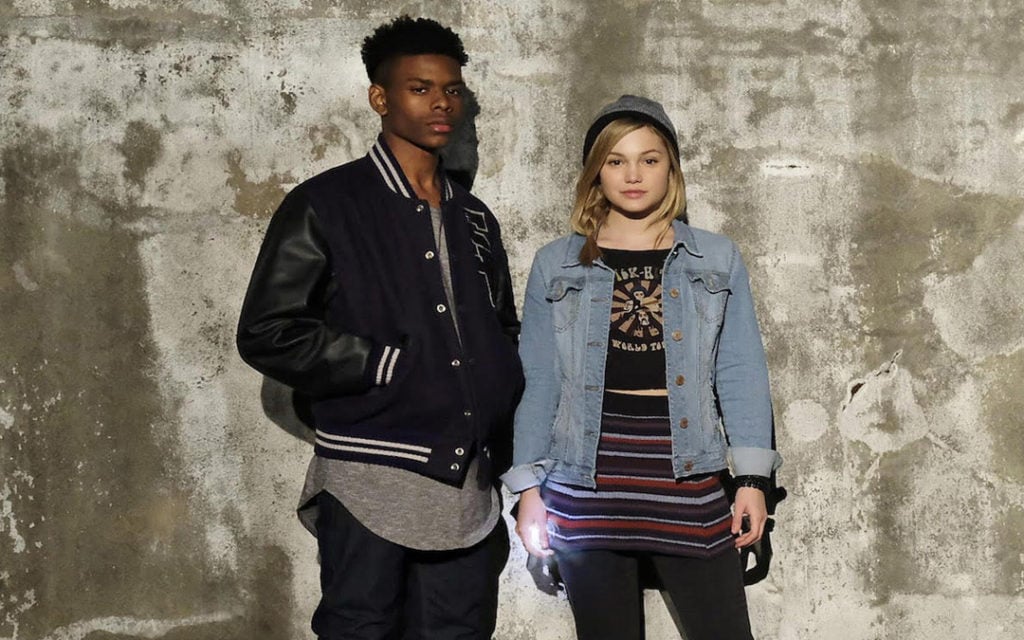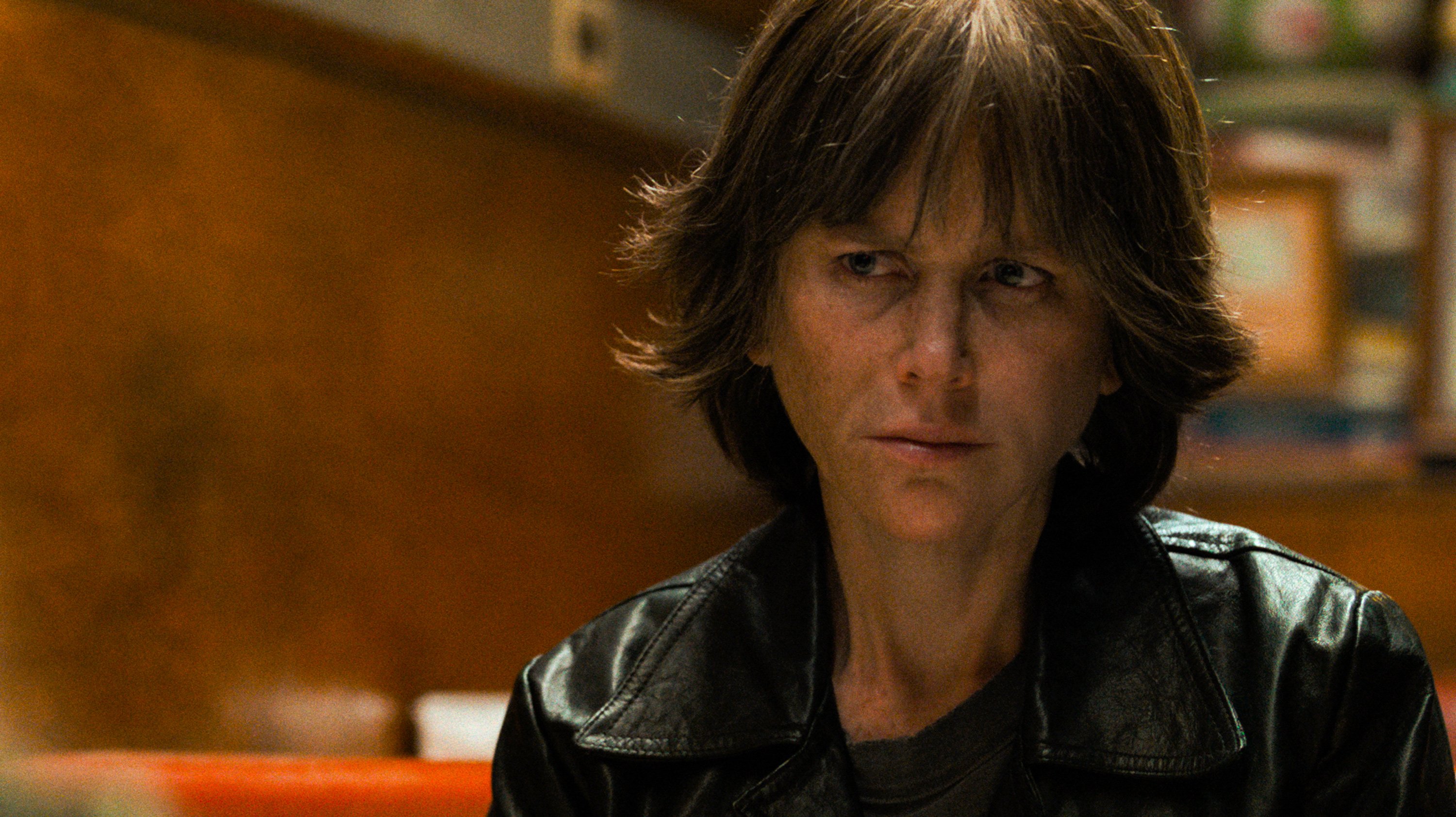All the Write Moves: Captain Marvel
March 18, 2019
Much has been written about Captain Marvel marking a milestone for Marvel Studios because it’s the company’s first movie with a solo female lead, and much has been written about the social media trolls who find this milestone disturbing. Now that the film has finally reached theaters, it’s time to move past the hype. While it’s fair to say that Captain Marvel is a comedown after last year’s Avengers: Infinity War and Black Panther — two of the most celebrated superhero movies ever made — it’s also fair to say that Captain Marvel is brisk and peppered with clever flourishes. So if you hear buzz that the picture is disappointing, keep in mind that we’ve gotten spoiled on exceptional superhero movies lately — a circumstance that would have been unimaginable a generation ago.
That said, onto the actual storytelling of Captain Marvel, courtesy of Anna Boden, Ryan Fleck, Geneva Robertson-Dworet (screenplay), and Nicole Perlman, Meg LeFauve, Boden, Fleck, and Robertson-Dworet (story). Boden and Fleck also co-directed. The movie introduces viewers to Carol Danvers (played by Brie Larson), an outer space warrior who travels to Earth in the mid-1990s and shares an adventure with Nick Fury (Samuel L. Jackson), the spy who has appeared in numerous Marvel movies. Lucky for them, Carol has superpowers including flight and the ability to shoot ray beams from her hands. She also has a Flerken, but you’ll have to see the movie to figure out what that means . . .
LOST AND FOUND
A recurring motif in Marvel movies is the notion of a character who feels directionless until an adventure gifts the character with both superpowers and a sense of purpose. There’s a reason Marvel goes to this well again and again. When the formula works, it aligns the super with the hero, so that when say, Iron Man flies around blasting bad guys with ray beams, we understand that the man inside the armor has a personal stake in protecting the world. His heroism is not an abstraction but is instead an aspect of character development.
Captain Marvel takes this formula to a new extreme, because when we first meet the title character, she is a warrior in Starforce, a military unit of the Kree, a race living on a distant planet. Very quickly, we learn that Carol (although she’s not yet called by that name) has abilities that set her apart from her peers, as well as memories suggesting that her past holds strange secrets. Later, once Carol reaches Earth and attempts to solve mysteries related to her current Starforce mission, she discovers that she is in fact an earthling, not Kree, and that much about her current existence is a sham. This directly leads to Carol unleashing the full potential of her superpowers, which the Kree held in check.
One needn’t dig deep to parse the thematic significance here; Captain Marvel is the story of an individual becoming actualized by embracing her true identity. So even though the plot is a whirl of alien races and extraordinary abilities and weird dream states (such as when Carol communes on a fantastical plane with an artificial intelligence being), the core of the story is self-discovery. What she discovers, of course, is the usual business of using her powers for good.
The useful insight for screenwriters is that sometimes your narrative destination is not as important as the path you travel to get there. Instead of presenting a generic story about a bland hero gaining abilities and then unquestionably using them for virtuous purposes, Captain Marvel strives to tell a specific story about a complex character stumbling across both the means and the reason to serve the greater good.
Takeaway: Few things rouse audiences like watching a character find purpose.
SAVE THE CAT
Many reviews have singled out a non-human supporting character as one of the movie’s most entertaining elements. (The following paragraphs have mild spoilers). Relatively early in the story, Carol encounters a yellow tomcat and befriends the animal, who wears a nametag bearing the moniker “Goose.” It soon becomes apparent that Goose has secrets, and the way these secrets are revealed adds comedy and surprise to Captain Marvel.
The specifics of Goose’s secrets aren’t important to this discussion; what matters is the notion of teasing a story element over time, even if that story element is not the most important aspect of the main narrative. In other words, even though we’re accustomed to tracking clues about a villain or the object of a quest, it can also be great fun to discover peripheral information.
The filmmakers introduce Goose as an innocuous element, then use a small plot twist to suggest that Goose will have greater importance. (The cat stows away on a ship that Carol and Nick use to escape a secret facility). Later, the filmmakers reveal Goose’s secret during a big action sequence. Handled in a clumsier fashion, the nature of this reveal would be quite different; it’s easy to imagine sharing Goose’s secret during the cat’s introductory sequence, thereby juicing a fairly dry section of narrative with something exciting.
The strategy used in Captain Marvel is preferable structurally. By delaying the revelation, the filmmakers compel us to drop our guard and accept Goose at face value. Then, by dropping verbal cues about Goose, the filmmakers throw off expectations even further, since we don’t necessarily trust the characters delivering those clues. Once Goose’s true nature is finally unveiled, it’s an unexpected treat that also feels consistent with the logic of the story.
Takeaway: Don’t rush to reveal your story’s secrets.
WHAT’S LOVE GOT TO DO WITH IT?
Captain Marvel does not have a romantic love story, a break from tradition that carries sociopolitical weight on two levels. Firstly and most obviously, eschewing a romantic subplot demonstrates that formulaic storytelling isn’t the only way to achieve box office success. Who says every superhero needs a romantic partner to rescue from supervillains? Secondly and less obviously, this narrative maneuver makes an empowering movie even more so.
For all of its strengths, Wonder Woman (2017) predicated much of its storyline on the relationship between the title character and her love interest, Steve Trevor. While the picture clearly situated Wonder Woman as superior to Steve in most respects, her belief in the importance of love — and the strength she gained from Steve’s affection — becomes problematic upon close inspection. Is the movie saying that Wonder Woman needs a man to feel complete? Captain Marvel sidesteps this conundrum, because at no point in the film does Carol express the desire for romantic love. Why? Because it’s irrelevant to her current activities. When the film begins, she’s on a mission for the Kree. Later, she embarks on a more challenging mission to unravel the mysteries of her past.
It is a tired cliché of adventure storytelling that heroes (male or female) regularly stop what they’re doing to romance someone attractive — think of James Bond ignoring all the henchmen who are trying to kill him because he’s wooed some compliant beauty into bed. It is an even more tired cliché of adventure storytelling that heroes (male or female) are primarily motivated by the desire to rescue their romantic partners from danger.
Carol isn’t having any of that. She’s a soldier with a job to do, and she evolves into a hero given the opportunity to solve intergalactic problems. Putting a woman at the lead of a superhero franchise was a big step for Marvel, and portraying her as a complete person who is not defined by her ability to attract and/or retain a lover is an even bigger step.
Takeaway: To keep your stories modern, challenge preconceptions.
Written by: Peter Hanson
Peter Hanson is a Los Angeles-based writer, filmmaker and teacher. He directed the screenwriting documentary Tales from the Script, and he teaches at Pepperdine University and UCLA Extension. He provides script consulting at www.GrandRiverFilms.com.- Topics:
- Discussing TV & Film




